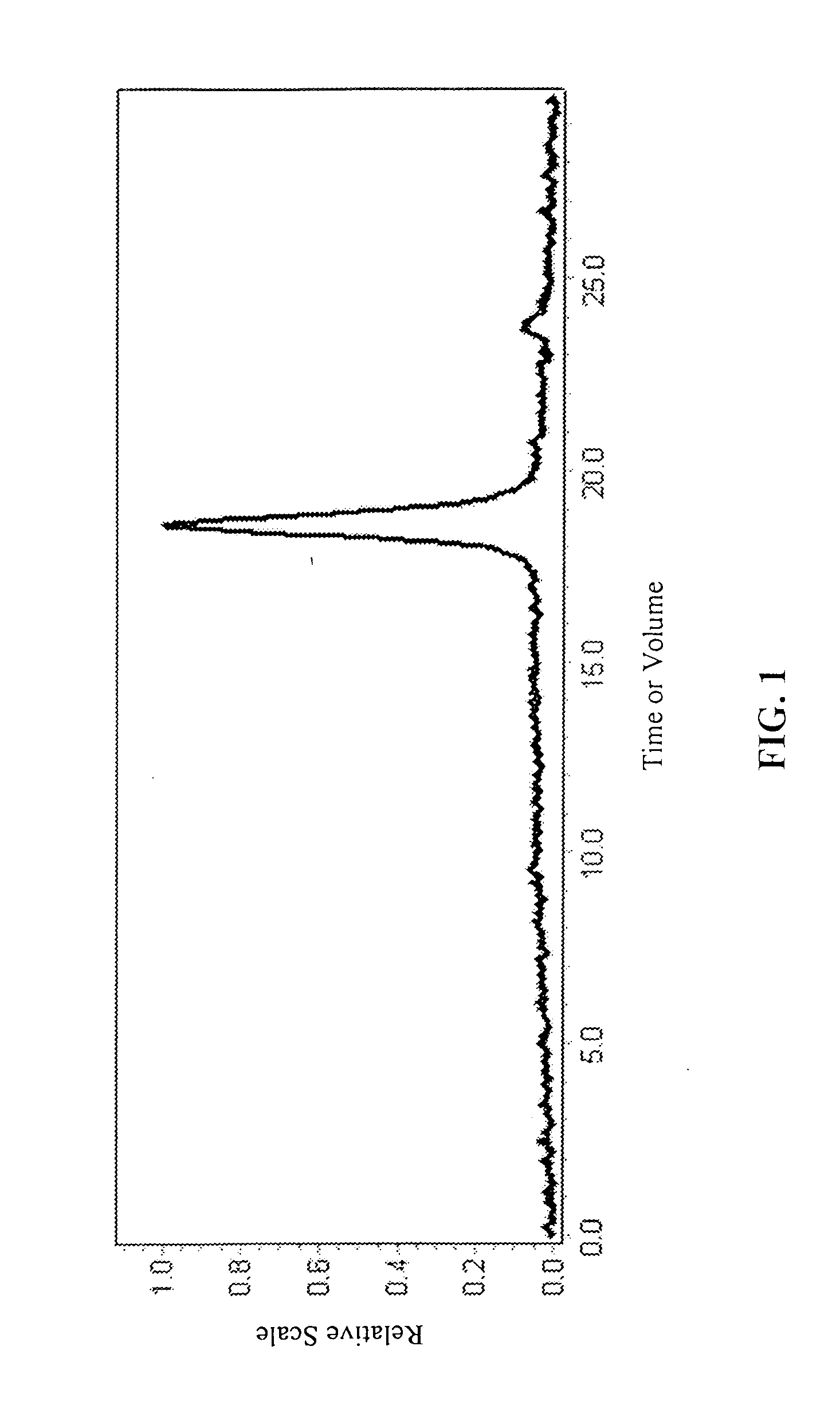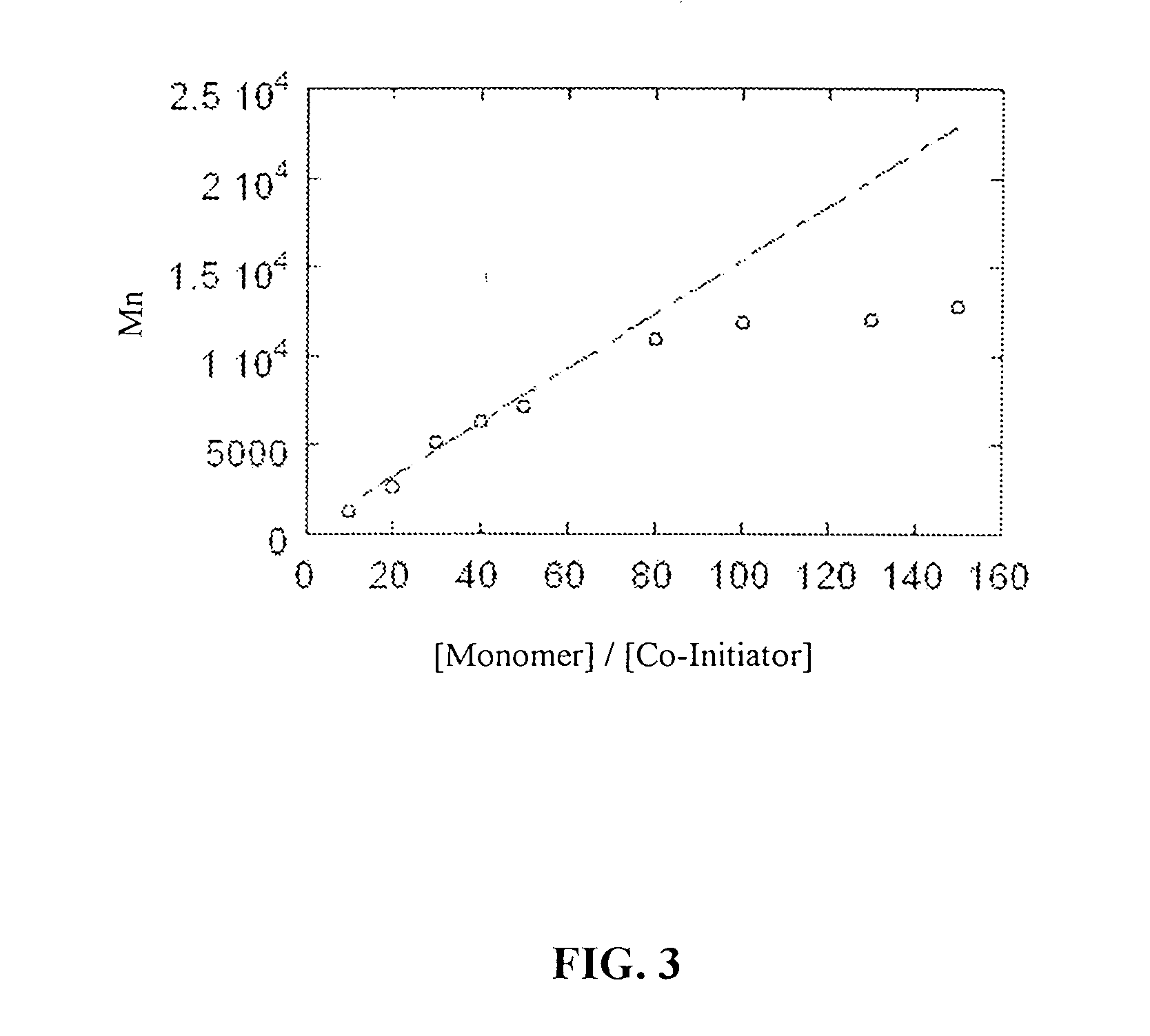Poly-beta-peptides from functionalized beta-lactam monomers and antibacterial compositions containing same
a technology of beta-lactam and polybeta-peptide, which is applied in the direction of antibacterial agents, drug compositions, peptide/protein ingredients, etc., can solve the problems of limiting the scope and scale of possible uses, difficult large-scale synthesis of -peptides, and relative cost and labor-intensive techniques, etc., to achieve the effect of great control over the polymerization conditions
- Summary
- Abstract
- Description
- Claims
- Application Information
AI Technical Summary
Benefits of technology
Problems solved by technology
Method used
Image
Examples
example 1
Monomer and Co-Initiator Synthesis:
[0092] Synthesis of Coinitiator (2):
[0093] Compound 1 was prepared using the method of Huang and coworkers (Huang, H.; Iwasawa, N.; Mukaiyama, T. (1984) “A Convenient Method for the Construction of β-Lactam Compounds from β-Amino Acids Using 2-Chloro-1-Methyl Pyridinium Iodide as Condensing Reagent,”Chem. Lett. 1465-1466). In a 1 L round-bottomed flask was combined DL-3-amino-3-phenyl propionic acid (0.007 mol, 1.156 g), 2-chloro-1-methyl pyridinium iodide (1.1 eq., 0.0077 mol, 1.74 g), acetonitrile (700 mL) and triethylamine (2.2 eq., 0.0154 mol, 2.15 mL). The reaction was stirred under nitrogen and heated to reflux overnight. The solvent was removed by rotary evaporation and the crude product was purified by column chromatography in 1:1 hexanes:ethyl acetate. Yield: 0.808 g, 40%. 1H NMR (CDCl3) δ 2.84-2.9, m, 1 H; 3.40-3.48, m, 1 H; 4.71-4.74, m, 1 H; 6.38, br s, 1 H; 7.2-7.4, m, 5 H.
[0094] Compound 2 was prepared using the method of Park a...
example 2
Polymer Synthesis
Materials:
[0108]
[0109] All reagents were obtained from Aldrich (Milwaukee, Wis.) and used as received. CH2Cl2 and THF were distilled under reduced pressure over CaH2.
[0110]1H (300 MHz) and 13C (75 MHz) NMR spectra were obtained on a Bruker AC+ 300 NMR spectrometer. Gel Permeation Chromatography (GPC) was performed using a Shimadzu LC-10AD liquid chromatography (HPLC) pump equipped with Wyatt miniDawn and Optilab rex detectors. The mobile phase was THF with a flow rate of 1 mL / min. Separations were performed using TSK-GEL column set (2×GMHHR-H).
Homopolymerization of 6:
[0111] Polymerization of 6 is a representative procedure for the polymerizations of β-lactam monomers 3-7, 10, and 13-15. Any experimental and observational exceptions will be noted. In a 7 mL glass vial, under inert atmosphere, was combined 6 (1 mmol, 153 mg), potassium tert-butoxide (KOtBu, 0.045 mmol, 5 mg) as base to deprotonate a certain fraction of the monomer, and 2 (0.0...
example 3
[0125] (a) Molecular Weight of the Product Polymer as a Function of the Ratio of Monomer-to-Co-Initiator Ratio ([monomer] / [co-initiator]):
[0126] A study was conducted to determine if systematically adjusting the ratio of the concentration of monomer reactants to the concentration of the co-initiator ([monomer] / [co-initiator]) would have a corresponding effect on the molecular weight of the resulting polymer product. Compound 6 was used as the monomer for this Example. The results are depicted in FIG. 3, which is a graph depicting [monomer] / [co-initiator] on the X-axis and product molecular weight (Mn) on the Y-axis. As can be seen from FIG. 3, the molecular weight of the polymers obtained versus the [monomer] / [co-initiator] ratio shows a linear, proportional dependence up to about [monomer] / [co-initiator]=80. These results reflect and confirm the living character of the polymerization reaction.
[0127] (b) Degenerate Block Co-polymerization:
[0128] The living...
PUM
| Property | Measurement | Unit |
|---|---|---|
| molecular weight | aaaaa | aaaaa |
| temperature≦about | aaaaa | aaaaa |
| temperature≦about | aaaaa | aaaaa |
Abstract
Description
Claims
Application Information
 Login to View More
Login to View More - R&D
- Intellectual Property
- Life Sciences
- Materials
- Tech Scout
- Unparalleled Data Quality
- Higher Quality Content
- 60% Fewer Hallucinations
Browse by: Latest US Patents, China's latest patents, Technical Efficacy Thesaurus, Application Domain, Technology Topic, Popular Technical Reports.
© 2025 PatSnap. All rights reserved.Legal|Privacy policy|Modern Slavery Act Transparency Statement|Sitemap|About US| Contact US: help@patsnap.com



